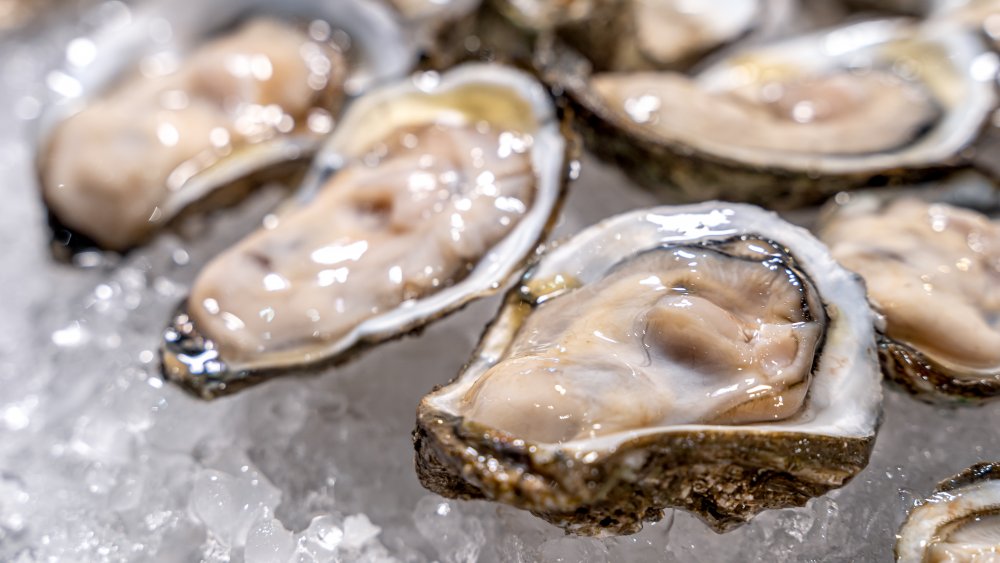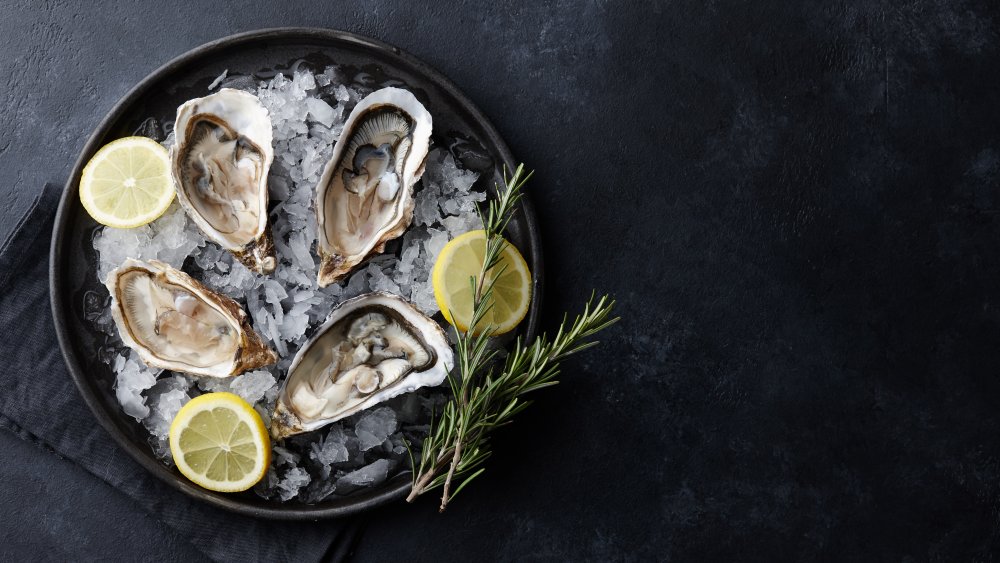You Should Never Order Raw Oysters At A Restaurant. Here's Why
Oysters are a divisive food. Though some people consider them to be the height of luxury, others have been put off by their slippery consistency and dubious appearance. Seventeenth-century British novelist Jonathan Swift, who is best known for writing Gulliver's Travels one said, "It was a bold man that first ate an oyster" (via NPR).
Love them or hate them, though, it's easy to agree that you're more likely to get sick from a raw oyster than you are from one that is thoroughly cooked, which is why you should refrain from ordering raw oysters at restaurants.
Oysters can be carriers of hepatitis A as well as a bacteria called Vibrio vulnificus, which can cause food poisoning (via Health). Around 100 people die every year in the United States from strains of the Vibrio vulnificus bacteria (via Port City Daily). Food poisoning brought on by a bad oyster can be particularly dangerous for those with a compromised immune system.
Alternatives to raw oyster in restaurants
It is well established that bacterial growth is connected to higher temperatures which is why it's so important that oysters be kept on ice or in the refrigerator (via CDC). Because it's difficult to ascertain the sourcing of the oysters and the conditions that they're being kept in the kitchen, it's best to steer clear.
However, oysters on the half shell aren't the only way to enjoy the shellfish. Frying oysters lowers the risk of food poisoning because cooking them all the way through can kill pathogens in the shellfish that can make you sick (via the University of Michigan). Another option is oysters Rockefeller, which involves baking or broiling the oysters (via Epicurious). John Ewart of the Delaware Aquaculture Resource Center advised people to "be aware of the risks" posed by oysters and "go for the oysters Rockefeller" when in doubt (via the Delmarva Daily Times).
If you plan on eating oysters at home, there are steps you can take to mitigate the risks. Buy them from a trusted source and ensure that they're fresh (via The Conversation). Transport them to your home in a cold thermos bag to reduce exposure to room temperature. Don't consume oysters with already opened shells. A viable oyster should tightly shut its shell when tapped. It's advised to eat chilled oysters within a day or two, but its best to cook oysters until their internal temperature reaches 194 degrees Fahrenheit (90 degrees Celsius).

